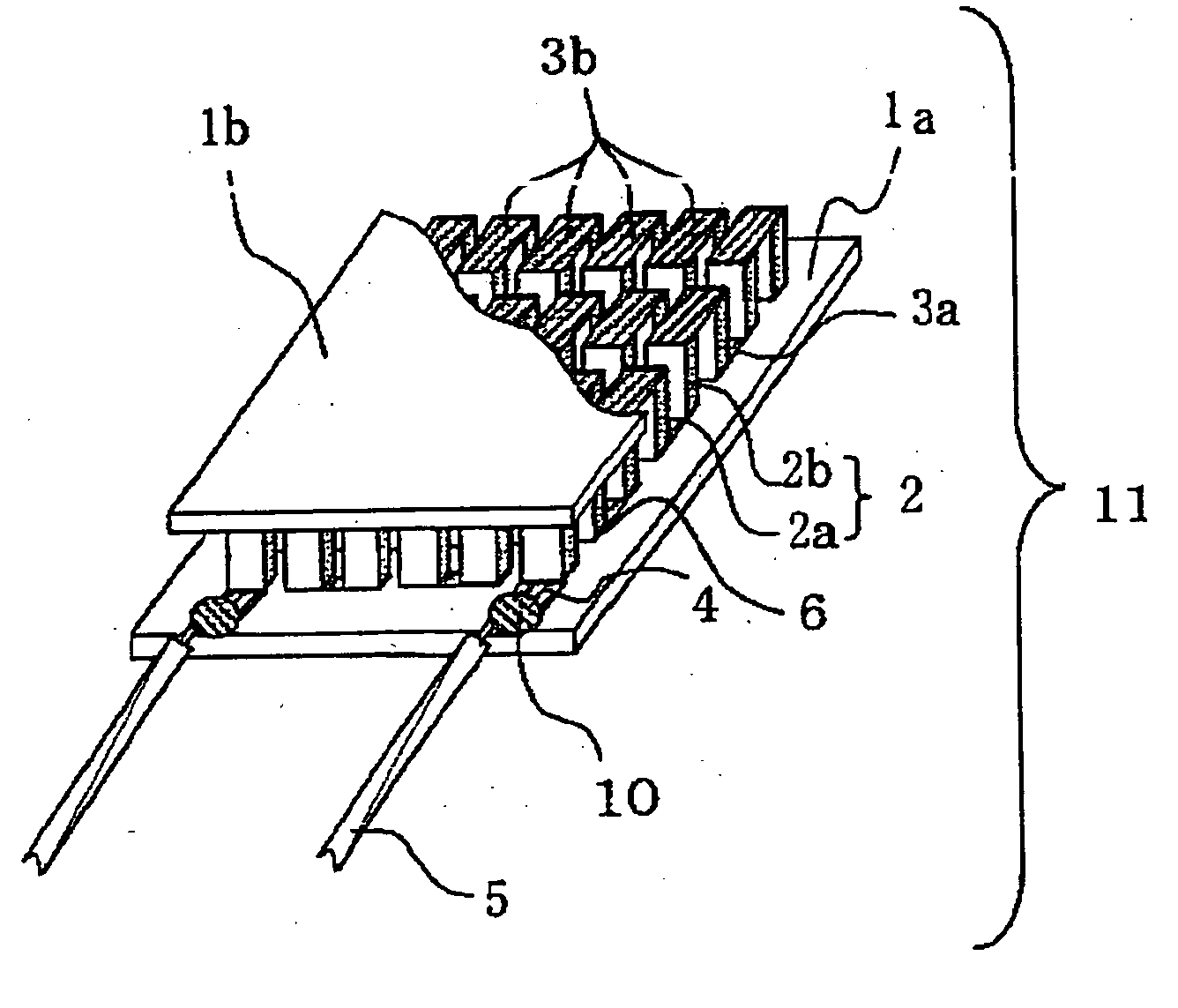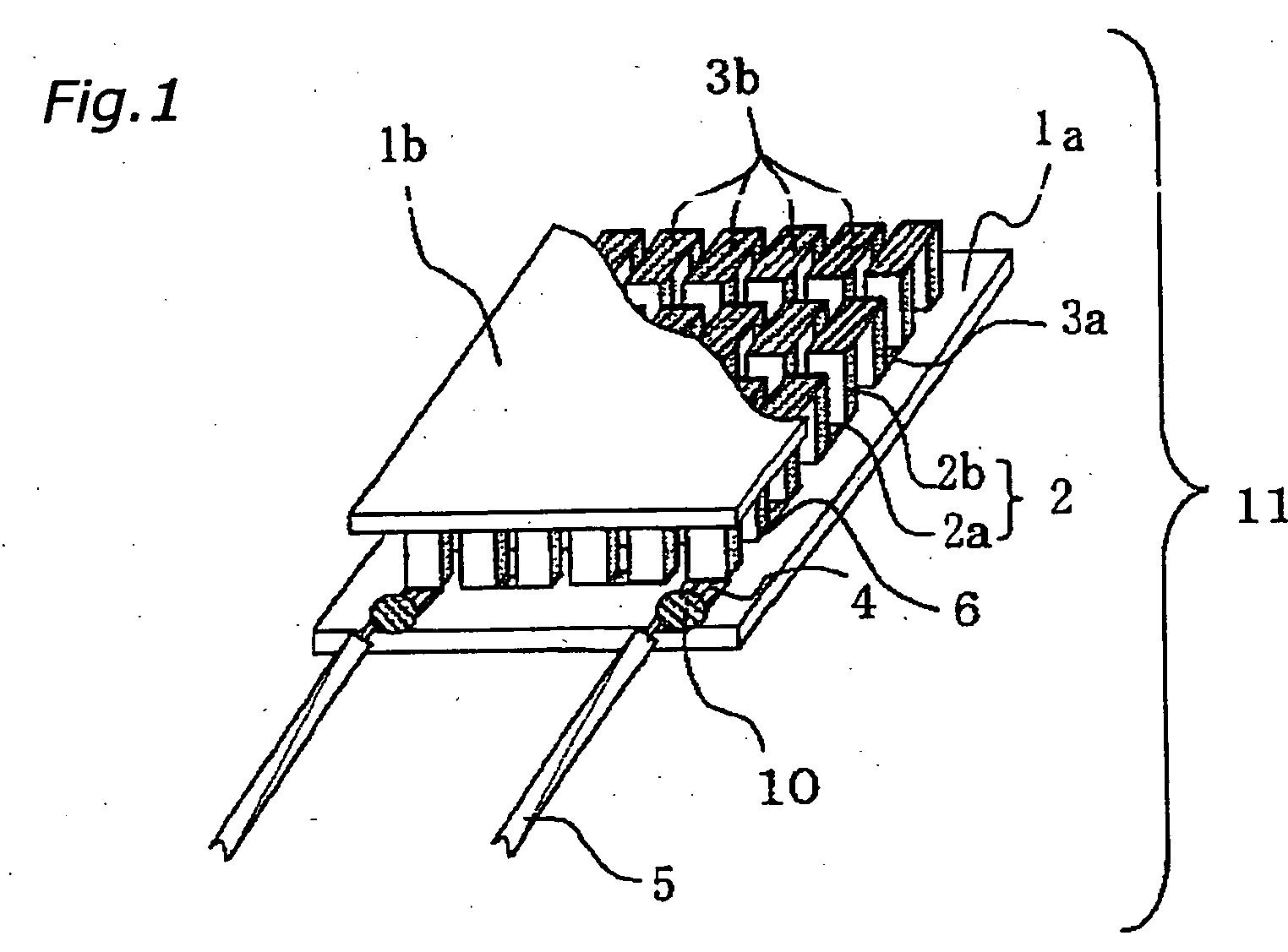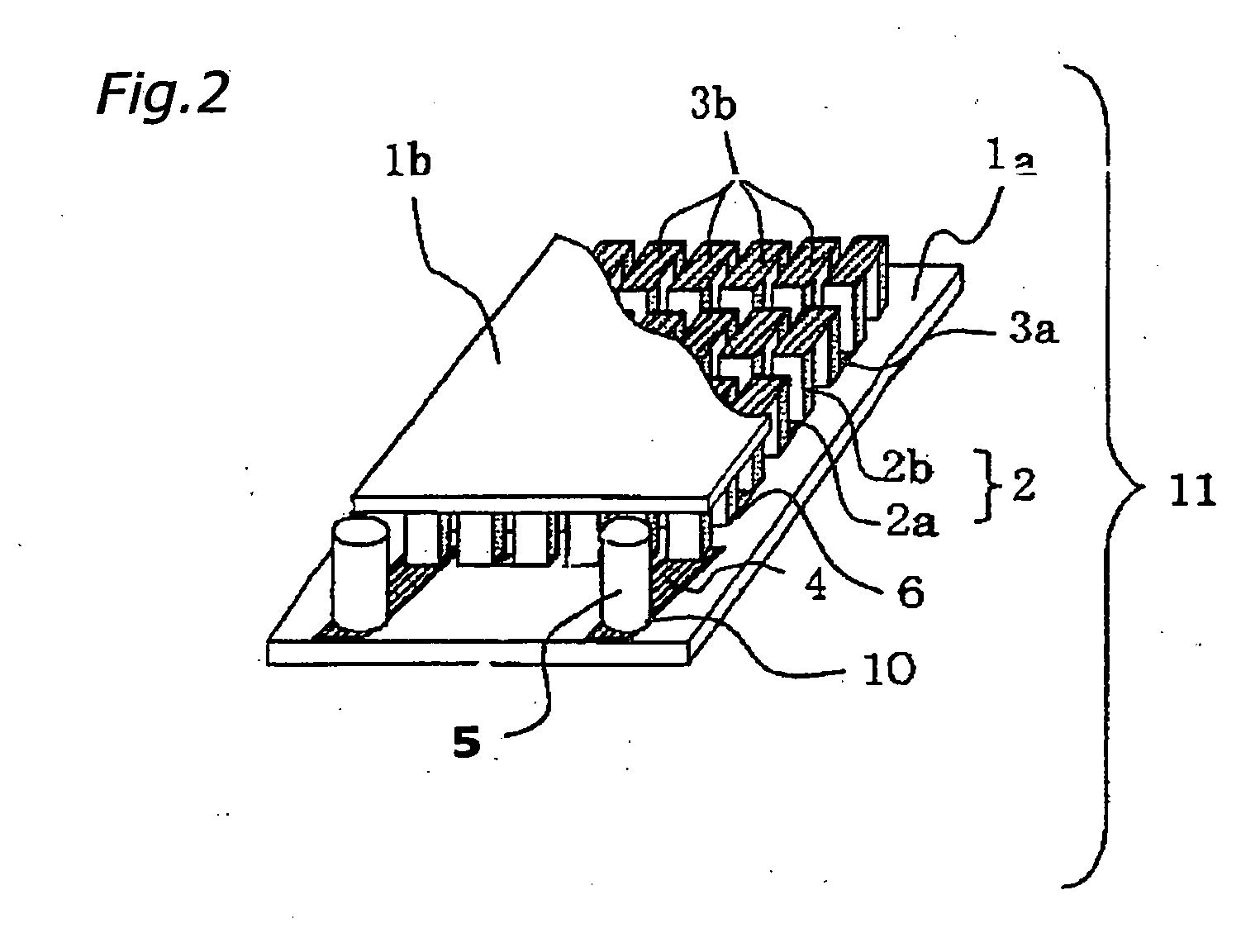Thermoelectric Module
- Summary
- Abstract
- Description
- Claims
- Application Information
AI Technical Summary
Benefits of technology
Problems solved by technology
Method used
Image
Examples
embodiment 1
[0078] This embodiment is a thermoelectric module where a P-type thermoelectric element and an N-type thermoelectric element have different values of resistivity. A case where the lead member is a lead wire as shown in FIG. 1 will be described as an example.
[0079] The thermoelectric module shown in FIG. 1 comprises support substrates 1a, 1b made of ceramics such as alumina or an insulating resin, an N-type thermoelectric element 2a and a P-type thermoelectric element 2b that are disposed in the same numbers on the support substrates 1a, 1b, wiring conductors 3a, 3b that connect the plurality of thermoelectric elements in series with each other, and external connection terminal 4 provided on the support substrates 1a, 1b and are electrically connected to the wiring conductors 3a, 3b. The external connection terminal 4 can be connected with a lead wire 5 by means of solder 6. Power is supplied from the outside via the lead wire 5 connected to the external connection terminal 4.
[0080...
embodiment 2
[0101] The thermoelectric module of this embodiment is a variation of the thermoelectric module of the first embodiment where the wiring conductor is formed in a predetermined shape so as to further improve the reliability of the thermoelectric module. With other respects, this embodiment is similar to the first embodiment.
[0102] In the prior art, there has been the wiring conductor 3 having D-shaped cross section as shown in FIG. 4A. As a consequence, when the thermoelectric elements 2 is displaced from the center of the wiring conductor 3, a gap is formed between the bottom surface of the thermoelectric elements 2 and the top surface of the wiring conductor 3 (element bonding surface), resulting in lower reliability. According to this embodiment, to counter the problem described above, the wiring conductor 3 is formed so as to have a cross section of rectangular, square or trapezoidal shape which is longer on the element bonding surface side (inverted trapezoid). FIG. 3A shows a ...
embodiment 3
[0113] This embodiment is a variation of the thermoelectric module of the first or second embodiment where composition of the solder 10 that connects the lead member 5 with the external connection terminal is controlled so as to improve the reliability of the thermoelectric module further. With other respects, this embodiment is similar to the first and second embodiment.
[0114] In this embodiment, Sn content in the solder 10 that connects the lead member 5 with the external connection terminal is controlled in a range from 12% to 40% by weight. There are no restrictions on the content of other component, as long as the Sn content is within this range. When the Sn content is less than 12% by weight, melting point of the solder becomes too high which results in melting or deterioration of the element, thus making it impossible to make a good joint. When the Sn content is higher than 40% by weight, the higher proportion of Sn in the solder increases the possibility of reaction with th...
PUM
 Login to View More
Login to View More Abstract
Description
Claims
Application Information
 Login to View More
Login to View More - R&D
- Intellectual Property
- Life Sciences
- Materials
- Tech Scout
- Unparalleled Data Quality
- Higher Quality Content
- 60% Fewer Hallucinations
Browse by: Latest US Patents, China's latest patents, Technical Efficacy Thesaurus, Application Domain, Technology Topic, Popular Technical Reports.
© 2025 PatSnap. All rights reserved.Legal|Privacy policy|Modern Slavery Act Transparency Statement|Sitemap|About US| Contact US: help@patsnap.com



